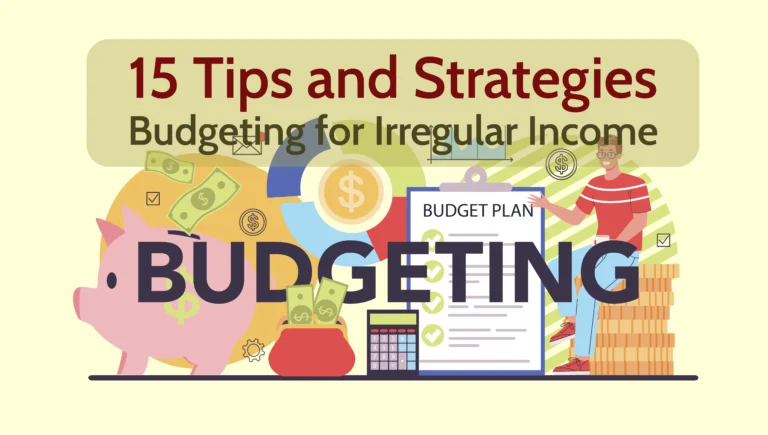8 Best Tips to Manage Debt
Debt can feel like a heavy burden, weighing down our financial well-being and causing sleepless nights. Whether it’s student loans, credit card balances, or mortgages, managing debt is crucial for financial stability. In this comprehensive blog post, we’ll delve into eight powerful tips to help you manage debt effectively and regain control of your financial future.

1. Face the Numbers Head-On
Before we dive into strategies, let’s confront the cold, hard facts. Gather all your debt-related information: balances, interest rates, and minimum payments. Create a detailed spreadsheet or use a budgeting app to track your debts meticulously. Facing the numbers might be daunting, but it’s the first step toward freedom.
Example: Imagine Sarah, a recent graduate with student loans, credit card debt, and a car loan. She listed all her debts, including interest rates, and created a comprehensive repayment plan that considered her income, expenses, and future goals.
2. Prioritize High-Interest Debts
Not all debts are equal. Focus on high-interest debts first. These are the ones that cost you the most over time. Pay more than the minimum on these while maintaining minimum payments on other debts. By tackling high-interest debts aggressively, you’ll save significant amounts in interest payments.
Example: John had a credit card with a staggering 24% interest rate and a car loan at a more manageable 5%. He wisely chose to allocate extra funds toward the credit card debt, saving hundreds in interest over the long term.
3. Snowball or Avalanche? Choose Your Strategy
The debt snowball method involves paying off the smallest debts first, gaining momentum as you eliminate them one by one. It’s like rolling a snowball downhill, gathering speed. On the other hand, the debt avalanche method targets high-interest debts regardless of size. Pick the strategy that motivates you and aligns with your financial personality.
Example: Maria opted for the snowball method, paying off her small medical bills first. The sense of accomplishment from clearing those smaller debts kept her motivated throughout her debt repayment journey.
4. Budget Wisely: Your Financial GPS
Creating a realistic budget is akin to having a reliable GPS for your financial journey. Allocate funds for debt repayment, essential expenses, and even a little for leisure. Cut unnecessary expenses—those daily lattes or impulse online shopping—and redirect that money toward paying off debts. Remember, every dollar counts!
Example: David reviewed his spending habits and decided to cook at home instead of dining out. By making this small change, he saved money and accelerated his credit card debt payoff.
5. Negotiate with Creditors: Your Silent Allies
Don’t be afraid to negotiate. Contact your creditors to discuss lower interest rates, extended payment terms, or hardship programs. Remember, they want you to succeed too. Be polite, explain your situation, and explore options. You might be surprised by the flexibility they offer.
Example: Lisa called her credit card company and negotiated a lower interest rate. The reduced rate not only eased her financial burden but also motivated her to stay on track with her debt repayment plan.
6. Emergency Fund First: Your Financial Safety Net
Unexpected expenses can derail your debt payoff plan. Build an emergency fund (usually three to six months’ worth of living expenses) to avoid relying on credit during emergencies. Having this safety net ensures that you won’t fall back into debt when life throws curveballs.
Example: Michael set aside part of his paycheck each month until he had a solid emergency fund. When his car needed unexpected repairs, he didn’t panic because he had a financial cushion.
7. Avoid New Debt: The Art of Saying No
While paying off existing debt, avoid accumulating new debt. Cut up credit cards, unsubscribe from online shopping newsletters, and resist impulse purchases. Remember, every swipe adds to your debt load. Practice the art of saying no to unnecessary expenses.
Example: Emily resisted the temptation to buy a new gadget when her old one still worked perfectly. She reminded herself that financial freedom was more valuable than fleeting material possessions.
8. The Secret Tip: Debt Consolidation
Consider consolidating high-interest debts into a single, lower-interest loan. This simplifies payments, reduces overall interest, and streamlines your financial management. Explore personal loans, balance transfer credit cards, or home equity loans as potential consolidation options.
Example: Robert combined his credit card balances into a personal loan with a significantly lower interest rate. Not only did this make managing payments easier, but it also allowed him to focus on a single debt.
Conclusion
Congratulations! You’ve just unlocked the secrets to managing debt effectively. As you embark on this debt-free journey, remember that it’s not just about numbers—it’s about reclaiming your financial freedom and peace of mind.
Here’s your final tip, a hidden gem: Automate your debt payments. Set up automatic transfers so that each month, like clockwork, your debts shrink while your confidence grows. Imagine the satisfaction of watching those balances decrease without lifting a finger!






